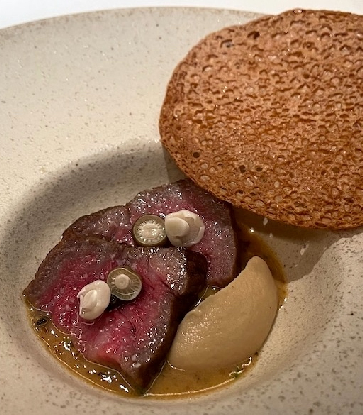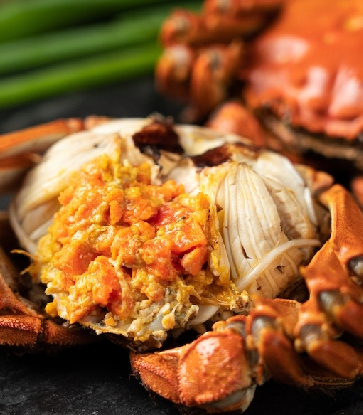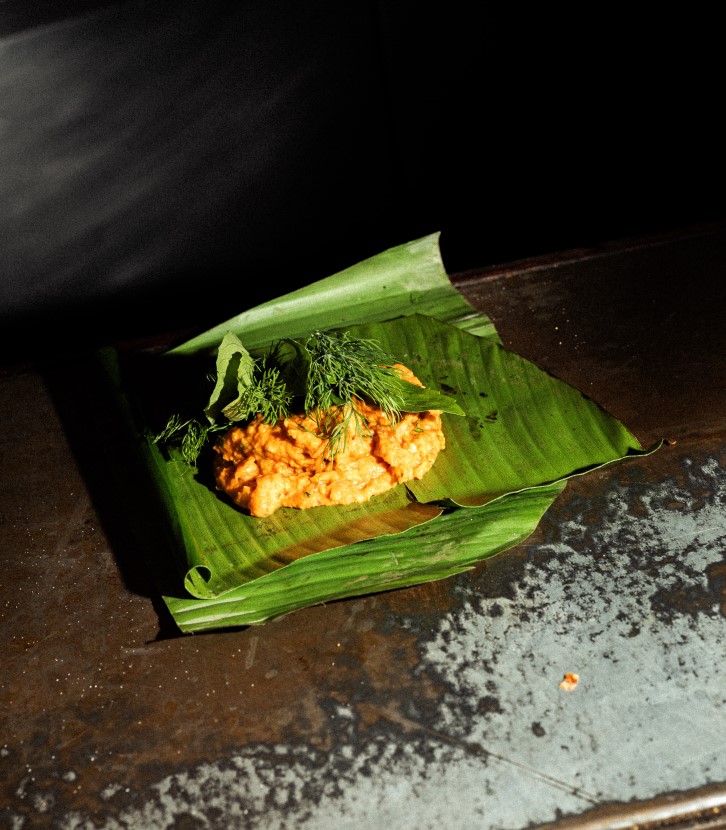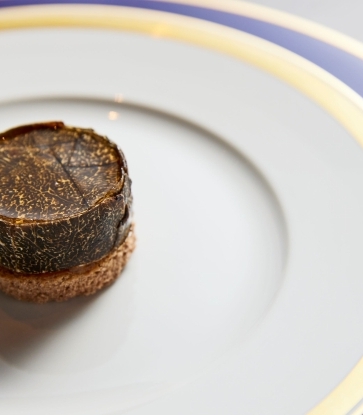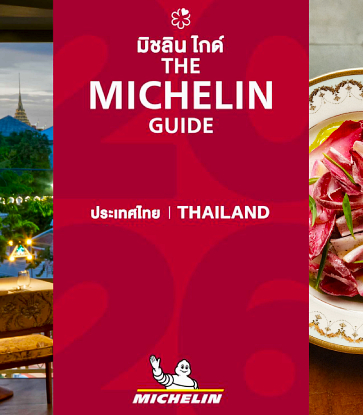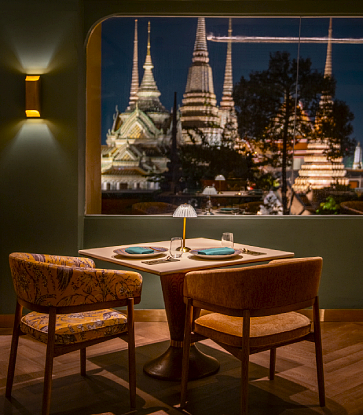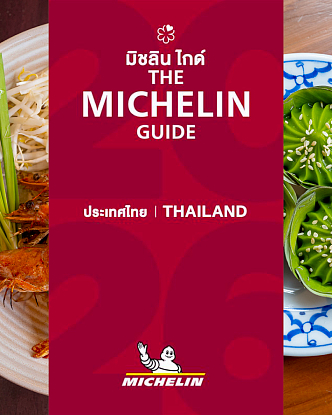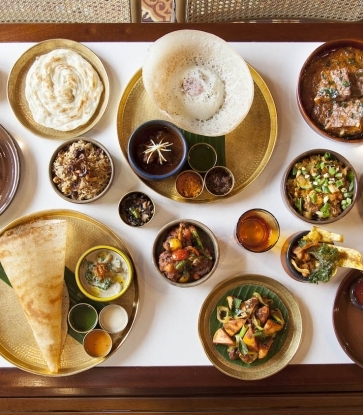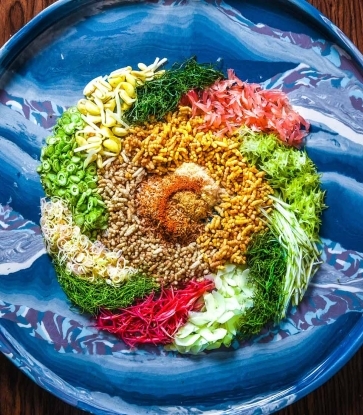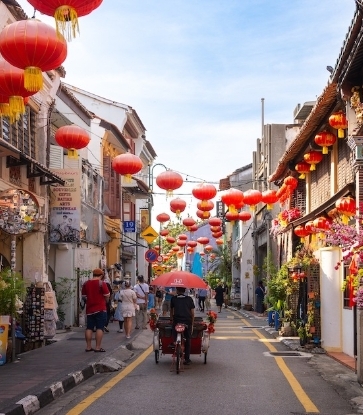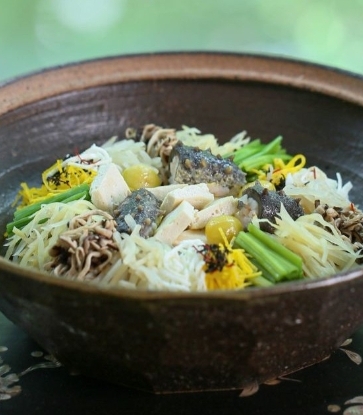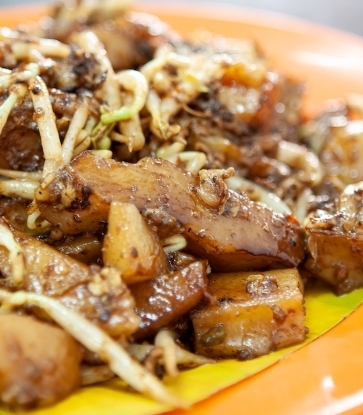Winter’s chill has sharpened its edge, though it feels like just yesterday that Ipdong (Beginning of winter) marked the start of the season. This year, Ipchun (Beginning of spring) arrives with the harshest cold snap in seven years. Temperatures are set to plummet to -10°C, with biting winds slicing through the air like a blade against bare skin. At the tail end of winter, the threshold of spring feels colder than ever.
On days like this, a steaming bowl of comfort becomes a necessity. Just as China has its rich and hearty niuroutang and Japan its creamy tonkotsu ramen, Korea has dwaeji-gukbap. A spoonful of rice steeped in the savory broth instantly melts away the cold, warming both body and soul.
Though its ingredients—pork and offal—might mirror those of other countries’ dishes, dwaeji-gukbap sets itself apart with its unique depth of flavor and unmistakable identity as Busan’s culinary treasure. Paired with stone pot rice or steamed rice and accompanied by a variety of side dishes and seasonings, dwaeji-gukbap invites endless customization, catering to each diner’s preferences. Chef Ki-jung Chun of Hapcheon Gukbap perfectly captures its essence: “If there are four million people in Busan, there are four million ways to enjoy dwaeji-gukbap.” This versatility makes it not just a dish but a reflection of individual taste, with every bowl creating its own story.
So how have MICHELIN-recognized restaurants elevated the possibilities of dwaeji-gukbap? Each establishment brings its own unique flair, offering tips and insights into how best to savor their interpretation of the dish. Through creative techniques and thoughtful preparation, these chefs maximize dwaeji-gukbap’s appeal, showcasing its diversity and innovation.
From their signature preparations to distinctive flavors, uncover the true essence of this comforting soul food.
Busan

Namakzip
Intending to create dwaeji-gukbap that everyone can enjoy, owner-chef Sung Hoon Lee of Namakzip explains, “We focus on a vegetable-based broth with just a hint of pork bone stock, topped with thinly sliced pork, to make the dish approachable for both children and seniors.” Crafted with health and comfort in mind, Namakzip’s unique dwaeji-gukbap contains fewer than 300 calories(excluding rice), making it an excellent choice for health-conscious diners.
The broth is infused with ginger, complementing the pork’s flavor and enhancing the dish’s value as a nourishing meal. Ginger garnish is added as a finishing touch. Chef Lee emphasizes that the inspiration for this dish stems from his desire to create food the whole family can enjoy. Reflecting on the significant influence of his late father-in-law, he shared, “He was my constant encourager and a driving force behind my cooking. Even now, I believe his advice and support live on in every bowl of gukbap we serve,” expressing his deep gratitude.
Regarding the choice of rice, chef Lee notes, “We use Sindongjin rice. Its chewy texture and rich moisture perfectly complement the broth, elevating the overall harmony of the dish.” This thoughtful selection underscores the importance of each ingredient in achieving Namakzip’s exceptional dweji-gukbap.
The restaurant’s manager, Won-jae Choi, highlights Namakzip’s commitment to preserving the natural flavors of its ingredients. “Our dweji-gukbap comes pre-seasoned, so we don’t provide additional condiments like dadegi (spicy seasoning paste). Instead, we offer only salt and pepper, allowing diners to adjust the flavor to their preference.” The dish is served with classic side dishes such as napa cabbage kimchi, fresh kimchi, and radish kimchi. The broth, made with a vegetable base and a small amount of pork bone stock, boasts a clean and light taste.
“Namakzip’s gukbap is carefully prepared in small batches, with just 100 liters simmered daily. We pour our hearts into every bowl, striving to present a dish made with genuine care,” shares chef Lee. He also reveals the thoughtful effort behind choosing the porcelain-lidded bowl to serve the gukbap. “The lidded bowl evokes the warmth of homemade meals, like my mother’s doenjang-jjigae or kimchi-jjigae. Through this, I believe we contribute to strengthening the sense of Korean identity in our cuisine,” he explains, underscoring the profound meaning embedded in every bowl of gukbap served at Namakzip.
Address: #1068 A, W square, 145 Bunpo-ro, Nam-gu, Busan
➜Discover more

Anmok
Anmok has received high praise from our inspectors for its “intriguing flavors and distinct differentiation.” The standard accompaniments to their dwaeji-gukbap include napa cabbage kimchi, radish kimchi, a mix of seasoned green onions and onions, and crispy fresh green chili peppers. Each table is thoughtfully stocked with dadegi, fermented shrimp, salt, and pepper, allowing diners to customize their bowl according to their preferences.
Chef Kwan-min Kim, the owner-chef of Anmok, offers his recommendations for enjoying dwaeji-gukbap at its finest. First, savor the broth on its own to fully appreciate its natural flavors. Next, add freshly minced garlic using the table-side garlic press to elevate the broth’s richness. Finally, gradually mix in dadegi to deepen the flavor to your personal taste.
The broth itself is prepared using a pure method, relying solely on pork bones without the addition of other ingredients. Guests often comment that the broth evokes the taste of chicken soup or other unique flavors. While this wasn’t chef Kim’s original intention, he explains that the result reflects his pursuit of a balance between the richness of bone broth and the clarity of a lighter stock. He describes it as a middle-ground broth, akin to the depth of seolleongtang and the clean finish of galbitang, and this balance forms the foundation of Anmok’s signature flavor.
Anmok also crafts its own sauces in-house, blending soy sauce, salt, and various vegetables to enhance the traditional dwaeji-gukbap with new layers of depth and flavor. This approach reimagines the classic dish with a modern touch, delivering a more refined culinary experience. Chef Kim emphasizes their dedication to presenting dwaeji-gukbap not only as a traditional dish of Busan but also as a clean, sophisticated meal free of any overpowering odors, a quality highly appreciated by international guests. Through these efforts, Anmok aims to redefine the image of dwaeji-gukbap for a global audience.
Address: 3 Gwangnam-ro 22 beon-gil, Suyeong-gu, Busan
➜ Discover more

Hapcheon Gukbapjip
Hapcheon Gukbapjip’s dwaeji-gukbap stands out for its clear broth, crafted to maximize the flavor of pork while eliminating any unwanted odors through a meticulous toryeom technique (the process of pouring and draining broth over the meat). This signature recipe has been passed down for generations, first perfected by the founding chef and owner, Byung-cheol Cheon, and now entrusted to head chef Ki-jung Cheon.
The meal includes six side dishes: seasoned chives (jeongguji), sea pineapple (meongge), chili garlic, ssamjang (a savory dipping sauce), onions, and fermented shrimp. These accompaniments allow diners to customize their dwaeji-gukbap to their liking. Chef Ki-jung Cheon emphasizes the dish’s versatility, saying, “If there are four million people in Busan, there are four million ways to enjoy dwaeji-gukbap.”
For a clean and minimalist approach, consider trying the method recommended by Busan-born artist Feeldog, who shared his favorite way to enjoy the dish.
However, please note that individual dining is unavailable here between 11 a.m. and 1 p.m., so plan your visit accordingly.
Address: 235, Yongho-ro, Nam-gu, Busan
➜ Discover more
Seoul

Okdongsik
At Oksongsik, the clear broth for their dwaeji-gomtang is made using only the front and hind leg cuts of Berkshire K black pork raised on Jirisan Mountain. This broth transcends the traditional image of dwaeji-gukbap, offering a fresh perspective with its clean yet profoundly flavorful character. Crafted with meticulous care, the broth maintains a perfect balance of clarity and depth. As only a limited quantity is prepared each day, it’s recommended to check availability before your visit.
Head chef Jun-hee Han suggests first dipping the meat into their special sauce to fully appreciate its flavor. On each table, you’ll find just one type of side dish: napa cabbage kimchi, made from a recipe passed down from the owner-chef’s mother. This kimchi pairs beautifully with rice cooked with minimal water, resulting in a firm and fluffy texture. Despite its minimalist presentation, the meal captures the essence of culinary purity, focusing on the essential charms of each component.
Address: 44-10 Yanghwa-ro 7-gil, Mapo-gu, Seoul
➜ Discover more

Gwanghwamun Gukbap
At Gwanghwamun Gukbap, the clear broth dwaeji-gukbap is crafted using only the rump of Berkshire black pork and the shoulder of Duroc pork, creating a broth rich in depth and flavor. The distinctive serving style—offering rice and broth separately—enhances the taste of freshly cooked rice.
When a quiet bowl of broth and rice arrives at your table, you can savor its natural, unseasoned flavors or add a touch of dadegi for a subtle spicy kick. The dish is accompanied by radish kimchi, fermented seafood, and chive-garlic as side dishes. Adding a garnish of fresh chives and pairing it with a tender slice of pork offers a symphony of flavors, turning each bite into a personal celebration of taste.
This harmony of simplicity and balance invites each diner to experience the dish in their own unique way, making every meal an intimate culinary moment.
Address: 53 Sejong-daero 21-gil, Sogong-dong, Jung District, Seoul
➜ Discover more

Anam
Nestled in the historic streets of Bukchon, ANAM, led by owner-chef Jang Jae Hyeon, embodies its slogan, “Familiar yet Extraordinary.” Staying true to tradition while introducing its own creative interpretations, ANAM presents a reimagined dwaeji-gukbap that sets it apart.
The soup features premium ingredients such as tender pork spare ribs and whole pork shoulder from Spanish Duroc pigs. Thinly sliced pork adds a velvety texture, while the delicate aroma of the broth elevates the dish’s depth of flavor. A signature touch at ANAM is their use of cilantro, which diners are encouraged to try first. For those who prefer to skip it, the herb’s cost is subtracted from the price—a thoughtful nod to customization.
Though the accompanying kimchi is a standout, ANAM’s array of side dishes, specially crafted to complement the pork soup, truly enhance the dining experience. Highlights include the lime-infused pork stir-fry and the intriguingly named rock-fried pork. These playful takes on pork utilize diverse cuts and creative techniques, offering a dining journey reminiscent of a well-curated course menu.
Interestingly, ANAM’s story began with a humble dish of spare rib kimchi stew. Chef Jang’s inventive spirit transformed this foundation into the signature dwaeji-gukbap the restaurant proudly serves today. Reflecting on his approach, chef Jang notes, “Can I introduce my personal tastes?” This introspection has led to the use of two cooking methods for the pork, achieving unparalleled tenderness. To retain a lively mouthfeel, ANAM uses a mix of Shindongjin rice and glutinous barley, lending the dish a subtle sweetness and chewy texture.
Despite its chef-driven leadership, ANAM prefers to operate as a cohesive team. Together, they push the boundaries of dwaeji-gukbap, blending innovation with tradition to craft a bold and inspiring interpretation of this beloved dish—one that resonates with diners who seek both comfort and creativity.
Address: 10 Bukchon-ro 5-gil, Jongno District, Seoul



